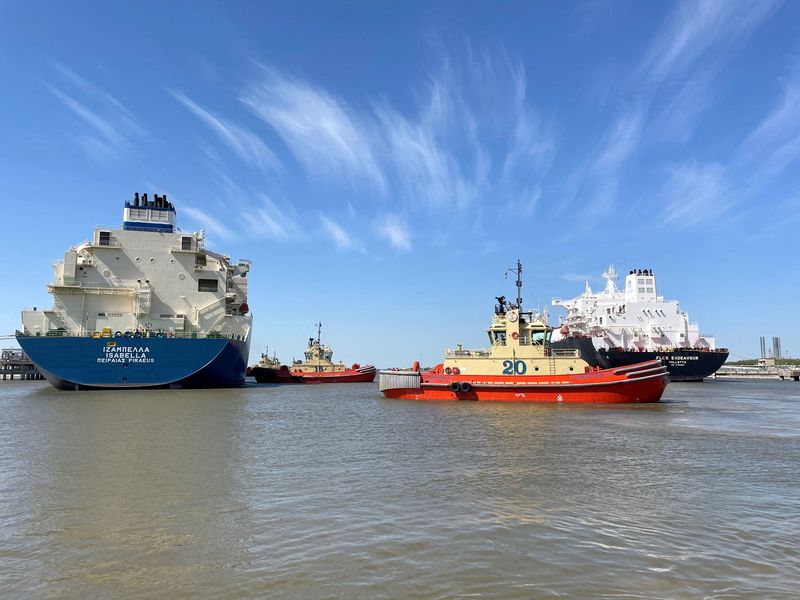Low gas prices, LNG demand in spotlight at Gastech conference
2024.09.16 06:51
By Scott DiSavino and Georgina McCartney
HOUSTON (Reuters) – Top energy executives and ministers will meet in Houston this week for the annual Gastech conference, with U.S. markets in focus as booming liquefied (LNG) exports help wean Europe off Russian gas and as Asia moves away from coal.
The U.S., once an importer of LNG, has surpassed Qatar as the world’s top exporter, with new technology allowing America’s shale producers to tap massive reserves. Both countries have major LNG expansion projects underway, playing greater importance in global markets from Europe to Asia.
The conference comes to the U.S. for the first time since 2019 as the country has also become the world’s biggest natural gas producer. U.S. natural gas production grew 4% last year to 125 billion cubic feet per day (Bcf/d). Exports of the super-cooled gas jumped 12% to 11.9 Bcf/d.
Gastech expects to host some 50,000 attendees from 125 countries, with sessions on everything from gas markets and decarbonization to Artificial Intelligence (AI) and energy security.
Surging supply has pushed U.S. gas prices to multi-decade lows this year, hampering producers but benefiting consumers and LNG firms using record amounts of gas.
By 2026, U.S. LNG exports should be double their 2024 levels, with annual feed gas requirements averaging 19.7 Bcf/d in two years’ time, said Matthew Palmer, executive director at S&P Global Commodity Insights.
“Natural gas prices will be significantly higher in 2025” as new LNG export projects boost demand, said Jim Simpson, CEO of energy research firm, East Daley Analytics.
In the U.S., new export capacity growth will support Europe’s commitment to divest away from Russian gas following its invasion of Ukraine, while offering Asian buyers a greener option for power generation.
Venture Global, whose CEO, Mike Sabel will speak to attendees about the role of LNG in Europe’s energy supply mix, is among those firms. The company’s Plaquemines LNG export facility in Louisiana will have an export capacity of up to 20 million metric tonnes per year, and is expected to begin operations this year.
The U.S. exported some 7.48 million metric tons of LNG in August, roughly 43% of which went to Asia, according to LSEG data.
GAS PRODUCERS BID THEIR TIME
U.S. shale gas firms are betting on new LNG terminals to boost their market and prices. Poor returns have forced some to cut production this year.
“The next nine months have more chance of being over-supplied than under-supplied because the LNG projects do not arrive in force until late next year,” said the president of Aegis Hedging, Matt Marshall.
U.S. producers generally need Henry Hub natural gas prices above $3 per million British thermals units (mmBtu) to generate cash flow for more drilling, said S&P Global’s Palmer. Gas prices are currently around $2.33 per mmBtu and have only traded above $3 a few times this year.
Henry Hub gas prices are expected to average $2.19 per mmBtu this year, the U.S. Energy Information Administration (EIA) said this week in a monthly report, lowering its estimate by 11 cents from the prior forecast.
“The overall story here is that a producer of natural gas should not expect this market to turn outrageously bullish with the turn of the year. It is going to take time and this market is vulnerable to lower prices really until next summer,” said Aegis’ Marshall.
Major U.S. producers, including Chesapeake and EQT (ST:) were preparing to curtail production and defer well completions in the second half of 2024 in August, after prices sank nearly 40% over the two months prior.

As those new LNG projects come online and take in more shale gas, prices are anticipated to improve. The U.S. EIA is forecasting an average Henry Hub price of $3.14 next year.
“Our expectation is that as LNG exports increase, the market will return to equilibrium, moving Henry Hub into the $3-4/MMBtu range that will support an increase in production,” said Marshall.








